
Related
Guests
- Belkis Willeassociate director with the Crisis, Conflict, and Arms Division at Human Rights Watch.
Ukrainian forces are withdrawing from some areas in the northeastern region of Kharkiv as Russian forces continue a new offensive that has displaced thousands. This latest setback for Ukraine comes more than two years after Russia invaded the country. Human Rights Watch has documented several incidents of Russian soldiers summarily executing surrendering Ukrainian soldiers, with drone footage showing the killings “in clear detail,” says Belkis Wille, associate director with the Crisis, Conflict, and Arms Division at Human Rights Watch. “They take off their vests, they put down their helmets, they lie on the ground and put their hands up. And then we see them being executed by Russian soldiers in cold blood.”
Transcript
AMY GOODMAN: This is Democracy Now!, democracynow.org, The War and Peace Report. I’m Amy Goodman, with Nermeen Shaikh, as we continue our conversation with Belkis Wille. She is the associate director with the Crisis, Conflict, and Arms Division at Human Rights Watch, and she’s joining us from Kyiv, the capital of Ukraine, where U.S. Secretary of State Antony Blinken made a surprise trip on Tuesday. He spoke at a joint press conference in Kyiv with Ukrainian Foreign Minister Dmytro Kuleba.
SECRETARY OF STATE ANTONY BLINKEN: We will provide an additional $2 billion in foreign military financing for Ukraine. And we put this together in a first-of-its-kind defense enterprise fund, and it has three components. One is to provide weapons today, so this will assist Ukraine in acquiring those weapons. Two is to focus, as well, on something that Dmytro just talked about: investing in Ukraine’s defense industrial base, helping to strengthen even more its capacity to produce what it needs for itself, but also to produce for others. And finally, using this fund to help Ukraine purchase military equipment from other countries, not just the United States, for Ukraine’s use.
NERMEEN SHAIKH: This comes as Ukrainian forces are withdrawing from some areas in the northeastern region of Kharkiv as Russian forces continue a new offensive that’s displaced thousands. The Ukrainian city of Vovchansk is reportedly in ruins following relentless Russian shelling. Ukrainian President Volodymyr Zelensky has postponed all of his upcoming foreign travel amid the new Russian offensive.
Human Rights Watch has a new report out on Ukraine titled “Russian Forces Executed Surrendering Ukraine Soldiers.”
So, Belkis Wille, if you could talk about that report, the human rights report — Human Rights Watch report, on this, on Russia and Ukraine and these incidents that you document of Russians killing surrendering Ukrainian soldiers?
BELKIS WILLE: Unfortunately, this is not something new in this conflict. Since the full-scale invasion, we’ve seen instances of execution of prisoners of war on the Ukrainian side and even on the Russian side. But what we’ve seen now in the last months and the report that we published covers these new emerging videos. It’s clips of drone footage. We believe these to probably be Ukrainian military drones that are flying near the frontline.
And in the context, as you said, of Russia retaking certain areas where there had been fighting and pushing the frontline, we have these five incidents that we’ve documented where you see, in clear detail in some cases, in this drone footage Ukrainian soldiers coming out of foxholes and dugouts. They are very clearly intending to surrender. They take off their vests, they put down their helmets, they lie on the ground and put their hands up. And then we see them being executed by Russian soldiers in cold blood. The footage is really shocking, I would say, to watch and really captures the brutality of these killings.
AMY GOODMAN: Belkis, can you talk about what’s changed right now, the intensification of the Russian attack, especially on Ukraine’s second-largest city, Kharkiv, and the region around it? And the significance now of — you have Xi meeting with Putin, and Xi presenting the peace plan and saying that — it looks like he wants to be a negotiator of that plan, that there must be peace in the region?
BELKIS WILLE: Absolutely. You know, we’ve come, unfortunately, to a moment in this full-scale invasion where Russia seems to have the upper hand, is pushing the frontline. And the reality, of course, is: Who pays the price? Ukrainian civilians. Ukrainian civilians are coming under repeated attack, as you said, in some cities that recently have been decimated by consistent shelling. Kharkiv is a huge city full of a civilian population. Many of them already had to evacuate in 2022 as Russian forces were approaching the city. They returned home. They’ve done a lot to rebuild parts of the city that were damaged. And now, again, they come to this moment where they wonder whether they need to evacuate, including families with young children, that really don’t know if they’re safe in their homes, because of this Russian assault.
NERMEEN SHAIKH: And, Belkis, for this, the Human Rights Watch report that we’re talking about, you wrote — Human Rights Watch wrote a letter to the Russian defense minister, Sergei Shoigu, at the end — towards the end of April, asking about the incidents that you document. If you could explain what the letter said and whether you’ve received a response? You’ve also pointed out that Human Rights Watch for decades has documented Russian war crimes, from Chechnya to Syria and now in Ukraine. Has the Russian government responded in the past to requests from Human Rights Watch for responses to incidents that you have documented?
BELKIS WILLE: In this letter, we asked about these very specific incidents. We shared with them links to access the drone footage that we reviewed. We asked them to share with us what information there was into why these killings occurred, why these Ukrainian soldiers were executed. And we wanted to know whether there’s actually an order that’s been put in place, a command telling Russian soldiers to execute Ukrainian soldiers rather than take them prisoners — of course, a very serious war crime.
We did not receive a response to that letter. And as you said, in the, sadly, decades of our documentation of war crimes committed by Russia, we do not receive substantive responses to our letters at all. And so, it really blocks any ability on our side to directly engage with the Russian government and with the Russian army on the abuses that continue to be perpetrated. And what we don’t see, or we don’t know of, is any measures being taken by the Russian military to hold its own soldiers accountable when they commit war crimes.
AMY GOODMAN: And, of course, now Shoigu is out as defense minister. What are you calling on Russia and the United States to do, particularly as both continue to use or provide banned munitions? And let’s talk about Secretary of State Tony Blinken in Ukraine this week, where he announced a $2 billion in additional military funding to Ukraine, saying the U.S. is working to quickly get more ammunition and weapons to the frontlines. Is this the answer, Belkis Wille?
BELKIS WILLE: Well, here, I really want to dive into one very specific issue, which is the issue of banned munitions being used in this war. The particular munition that I’m speaking about are cluster munitions. These are a type of munition that most countries around the world banned the use of absolutely because of the harm they pose to civilians. There’s a convention that many states have signed on to, indeed. Unfortunately, the U.S., Ukraine and Russia have not signed the treaty that bans the use of cluster munitions.
And since — I remember it. It was in the very first hours of the full-scale invasion by Russia of Ukraine in 2022 that we heard about a cluster munitions attack. Only two weeks ago, there was a horrifying cluster attack by Russian forces on the city of Odesa. This was at 7 p.m. on a joggers path. It killed five civilians, injured over 30 more, including two children and a pregnant woman.
And then, tying this, of course, to the U.S., the U.S. has been shipping more cluster munitions, these same munitions, to Ukraine for Ukraine to use. The latest shipment, the fifth shipment of cluster munitions from the United States, was announced in late April. And clearly, adding banned munitions, more banned munitions, into this conflict is absolutely not the answer. And this is what continues to harm Ukrainian civilians.



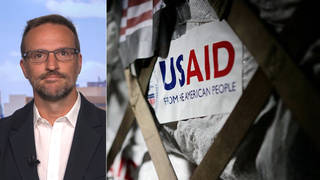
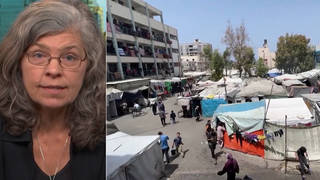
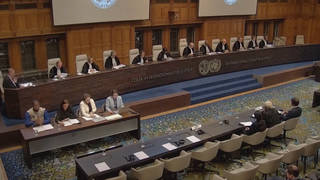
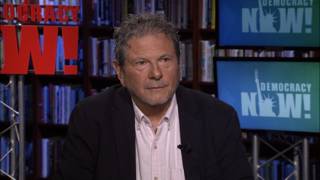
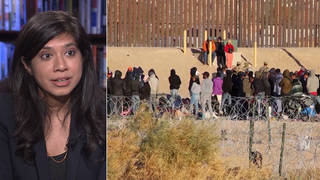



Media Options